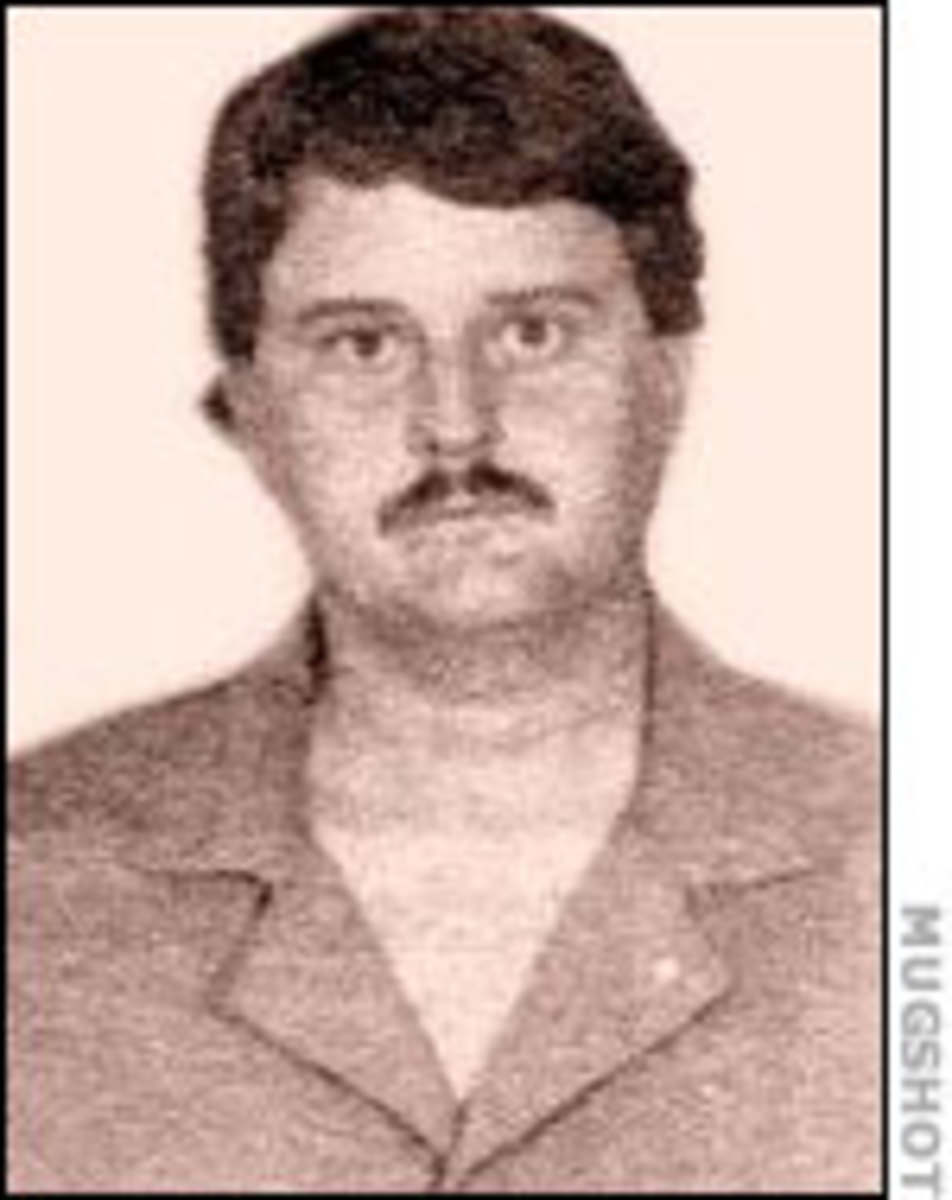How do Forensic DNA Databases Help Law Enforcement?
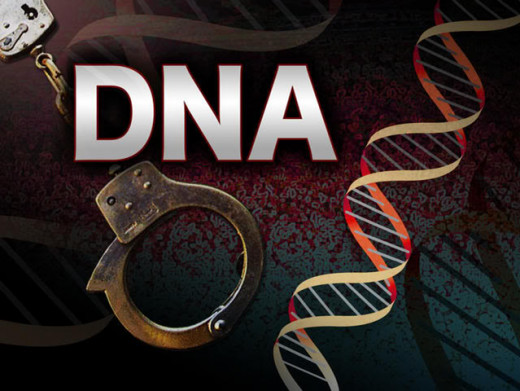
DNA
deoxyribonucleic acid, is the hereditary material in humans and almost all other organisms. Almost every cell in a person’s body has the same DNA. Most DNA is located in the cell nucleus, but a small amount of DNA can also be found in the mitochondria.
Identifying the Suspect
One of the persistent problems in criminal investigations is identifying the perpetrator of a crime. Witnesses can be mistaken or disagree with each other, fingerprints can only be used if a substantially identifiable portion of a complete print is found, and physical evidence can be manipulated. But there is one type of evidence that is very hard to misinterpret, this evidence is DNA.
What is DNA? What is this tiny molecule that seems to be everywhere? DNA stands for deoxyribonucleic acid. This substance makes up the genetic material of all the cells of a “body” that contains a nucleus. These cells that have a nucleus include, “tissues, bone marrow, hair roots, tooth pulp, semen, white blood cells and the waste cells in saliva and urine,” but red blood cells do not contain DNA (Innes, Bodies of Evi. 147). When looking at a DNA strand, the DNA molecule can be visualized as a long ladder that is twisted into a tight helix which is made up of alternating groups of proteins. What makes this strand of proteins so important?
Because everyone on the planet in unique, we all have our own specific traits imbedded in our DNA, with the exception of identical twins. Scientists are able to read the unique pattern of proteins on our DNA. This gives the Criminal Justice System a way to positively identify a suspect through an unknown.
All objects in the universe are unique. No two things that happen by chance ever happen in exactly the same way. No two things are ever constructed or manufactured in exactly the same way. No two things wear in exactly the same way. No two things ever break in exactly the same way.
— Joe NickellDNA and PCR and Loci
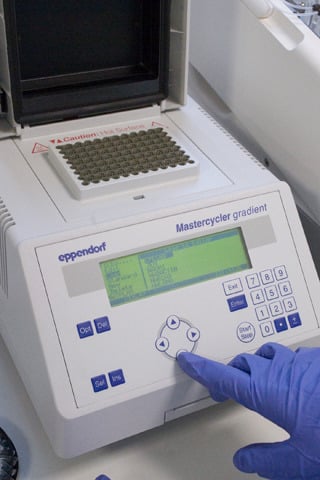
Scientists have come up with a way to identify individuals based on their own unique DNA profiles. Through the use of a Polymerase Chain Reaction Test (PCR) scientists are able to make a replica of a person’s DNA. These replicas can then be compared for possible matches with another sample of DNA.
Once a strand of DNA has been run through a PCR test, the DNA will be put into a profile that may be used to compare to samples found at crime scenes. A Forensic DNA Analysis compares the two DNA profiles for possible matches in their loci. The loci are the position of a particular gene or allele in a chromosome, and there are thirteen possible loci that can be matched . The more loci detected the greater chance that two strands of DNA came from the same person. When DNA is found to share many loci the significance of theDNA match is expressed in the form of a statistic. This statistic shows how likely the DNA found at the scene matches that of the subject.
For instance, if all thirteen loci match, “the chance of a random match between two unrelated white people in the United States is one in 575 trillion people” (Marzilli 21). It can be inferred from a match like this that the strand of DNA matches that of the subject. This allows investigators to find out who was at the scene of a crime. As David Fisher once said, “once again the blood has told the story." The use of DNA allows investigators do their job that much faster.
Forensic DNA Use
All this formation helps identify the suspect and makes the Criminal Justice System work that much more. The DNA in our body makes us unique “the same stuff that makes [people’s] eyes green or [their] hair curly can pinpoint [them] as the perpetrator of a crime” (Lyle 227). Forensic DNA Analysis is an important part of the Criminal Justice System, and DNA analysis should be broadened through more extensive use in court, databanks, and everyday applications.
DNA as Evidence
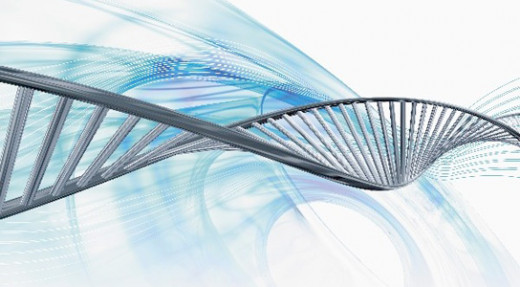
is and includes everything that is used to reveal and determine the truth, and therefore is presumed to be true and related to a case. Giving or procuring evidence is the process of using those things that are either (a) presumed to be true, or (b) were in fact proven to be true by earlier evidence (truths) and demonstrates the broadening of the truth of a case.
DNA serves as great evidence in court. The DNA that is presented at court can place or remove suspects from a scene. DNA evidence is introduced at court to help support a theory that is being offered to explain the events leading up to or during a crime." The results from DNA profiles can help investigators determine who was at the scene of the crime. Where DNA has helped convict many criminals, DNA has also provided defense attorneys with proof of their client’s innocence."
One thing that has to be remembered is that science in court does not establish guilt or innocence rather, forensic science contributes information about what may have happened and who may have been involved. The science does not assert whether the action was legal or illegal. If the DNA with a high match statistic of a suspected man is found at a crime scene it can be relatively inferred that he was there, whether he committed the crime or not is up to the judge and jurors to decide.
The main way that forensics’ present their data is through associations that can be reconstructed, and “the primary way in which association occurs is by establishing reconstruction; a bullet is associated with a weapon, a fingerprint associated with a person, [and] a shoeprint associated with a shoe” (Inman 3). It’s the job of forensic scientists and ultimately the court to make use of inference and deduction to interpret the physical facts that point to the criminal . It’s through this system that the court can tie a suspect to a crime using unbreakable evidence.
DNA used in Court
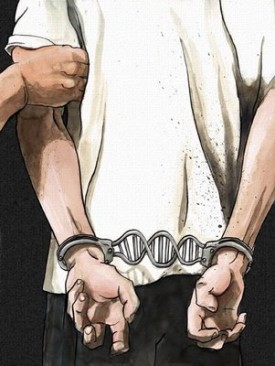
DNA plays a major part in court. DNA is used to convict suspects and to prove the innocence of those wrongly convicted. But before any of this can be done, the admissibility of the DNA evidence must be evaluated. In order for DNA evidence to be admissible in court, it must be relevant to the case that the DNA is being used in.
When the DNA is deemed admissible, the DNA will be “presented to the judge and jury through the testimony of a witness” (Kobilinsky et al., DNA: F. and Legal 198). This is done because of the complexity of DNA testing. A forensic scientist is usually cross-examined in order to give the judge and jury an explanation of the DNA’s significance in a trial. This allows for the Judge and jury to understand what the evidence can mean and any possible explanations it can uphold.
If a forensic scientist testifies that the DNA of the defendant was found on the handle of a knife in such a way that forced was needed to get it there, then at some point during the crime the defendant would have had to use force while wielding the knife. This explanation shows the significance of the DNA. If the significance of the evidence was not shown, then the defendant may state that the DNA could have gotten on the knife in a multitude of ways.
The lack of evidence from another suspect can be inferred to the fact that the suspect’s DNA was not found on the knife or at the scene. This court system keeps people from being wrongly convicted, and helps keep the real criminals in jail through hard evidence.
DNA: From Cheek to Court
Comparisons and DNA Databases
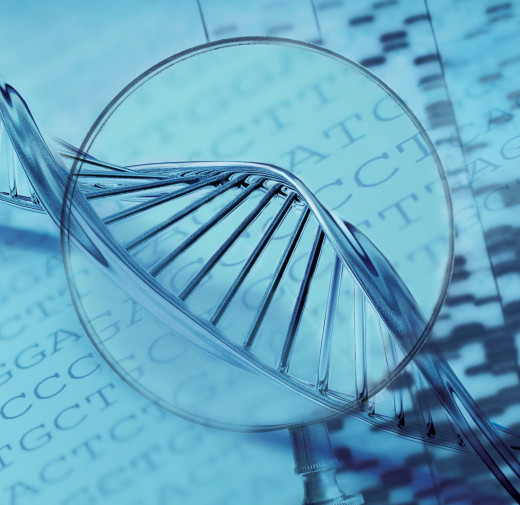
The only way to find a match in DNA is if there is a sample that can be compared to it. Without the correct suspect, there cannot be a match found between the DNA at the scene and the DNA of the suspect. This is where a DNA databank comes in.
DNA databanks allow investigators and scientists to run DNA through a system of convicted criminals. These systems are known as CODIS ,which stands for Combined DNA Index System, is a database of DNA fingerprints taken from felons and from biological fluids obtained from crime scenes. This system allows investigators to get a match by using DNA from a suspect that they may not have in custody.
At this time the CODIS system predominantly is operated on a state-by-state basis because it is not yet available in every state. When a person’s DNA is put into a database, it is first put into a profile. This profile “is an enormously useful development that some see as the most exciting and important law enforcement tool” (Yeatts 122). People don’t have to fear that their DNA will go to bad use, because although a person’s DNA contains a great deal of information, the DNA profile that is used in law enforcement only contains the identification piece in a strand of DNA. This part of DNA is used for the purpose of finding a match. This piece of DNA can not be used to look at persons ancestral genes. The databases that are being used are a great help to finding a match in crimes. This faster system of matching criminals allows investigators to devote their time to more cases and in turn get more criminals off the streets.
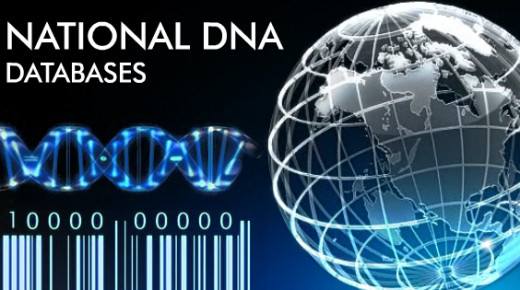
Who is in the Database?
The people who are put into the databases are mostly those who have convicted a felon. Most databases contain violent offenders, but many states collect DNA from nonviolent offenders, and law officials maintain that there is ample reason to do so. It is believed that if an offender knows his DNA is on profile, then that offender will be less likely to escalate in crime because the offender can be matched through DNA. Why would someone who has already been convicted of a crime need to provide a DNA sample?
Law officers explain this by “pointing to the high recidivism rate among rapists. Entering a convicted rapist’s DNA profile into a databank deters him from committing another rape after he’s released” (Marzilli 74). This is true for offenders of different crimes as well. The people who are in the databases vary from state to state, but every state requires DNA from convicted sex offenders. Some states require DNA only from those who have been convicted of felonies while others require DNA samples upon arrest for any offence. The majority of the databases in the United State hold the profiles of violent felons, and this makes it a lot easier to catch a suspected criminal. These databases allow law enforcement to make quick matches for crimes committed by double offenders.
SMALL CRIMES ALWAYS PRECEDE GREAT ONES. NEVER HAVE WE SEEM TIMID INNOCENCE PASS SUDDENLY INTO EXTREME LICENTIOUSNESS.
— Jean RacineDNA and Murderers
These databases are helpful to investigations. The DNA profiles allow police to find the criminal of a crime without having an actual suspect. DNA profiles are good for connecting a suspect to a crime, but DNA is effective in confirming the suspicion that several crimes have been committed by the same person.
If there is a serial killer who is on the loose, a database can help pinpoint all the crimes that he committed. If a serial killer killed three people in Illinois and then a person in Texas, the DNA at the scene can be put into a system and then compared to different crimes. So investigators would know that the same man was linked to four different crime scenes where murders took place because his DNA was found at all four scenes. This saves time for the investigator instead of looking for four different suspects they would be focused on one. This also allows them to look for possible patterns in the crimes which can lead to the criminal.
While undertaking an investigation an investigator may have four suspects, the question is. Who did it? When the data comes back on the DNA, the investigator may get a match for two of the suspects. One of the suspect’s “skin cells were found under the victim’s fingernails while the second suspects hair was found on the floor. Since DNA found “under the fingernails of a victim often points” to the fact that a “struggle took place”, the investigator is more likely to suspect the first suspect, and view the second suspect with suspicion (Owen, Police Evidence 23). The databases allow investigators to weed out suspects and find the real perpetrator of the crime.
The Use of DNA in Cold Cases
While DNA can help with current cases, DNA can also be used in cold cases and disasters. DNA can be easily preserved, because of this “examiners [can] re-open particularly heinous cases that occurred before DNA typing was available” (Fisher, Hard Evi. 153).
Before DNA typing was discovered, the only way for investigators to find suspects was through; witnesses, fingerprints, physical evidence, and confessions. If DNA was found at the scene there was little importance to it.
Even though this was true, a lot of case boxes contained physical evidence that had DNA on it. Now investigators are able to re-open cold cases in the hopes of using the DNA to find the perpetrator of the crime. The use of DNA helped solve the March 1983 kidnap and murder of Elaine Graham. While in court “Edmond Jay Marr pleaded guilty to 2nd degree murder of Elaine Graham in 2005” due to the “knife found in his possession when he was arrested for armed robbery a month earlier."
The knife led to his conviction because “DNA evidence, unavailable in 1983, matched blood found in the knife crevices” (Owen, Hidden Evidence 126). The introduction of Forensic DNA Analyses to the Criminal Justice System allows law enforcement agencies to solve cases that happened decades ago.
DNA and Disasters

The use of DNA for identification is another helpful tool for law agencies. When there is a disaster that results in a number of casualties, it’s not always easy to identify those who died.This is where DNA comes in handy once again. DNA found at the scene can help to identify unknown corpses or scattered remains.
This was seen “when the Twin Towers of the World Trade center collapsed on [September 11, 2001], the bodies of most victims disintegrated, making identification” nearly impossible (Innes, DNA and Body 54-55). After September 11, people wanted to find their loved ones. In order to help with identification, thousands of people submitted their DNA into a database that was used to help identify the dead. Scientists were able to do this because a person contains DNA from both the mother and their father. By comparing the victims DNA with that of one or more relatives, scientists could confirm if the victim was a relative and how close.
During 9/11 it became vital to reliably identify the bodies by comparing recovered DNA to the DNA of exemplars of close relatives. People also submitted other DNA, such as hair from a victims brush or blood left over from a resent test. Because of this database “over 1,500 [victims] were named” (Innes, DNA and Body 56). Without DNA analysis thousands of families would never have been able to bring their loved ones home.

The use of DNA and Anastasia
Forensic DNA analysis is a great help for identifying the unknown. There are many cases where investigators do not know who it is that died. If the person was ever involved in a felony, the investigators could run a profile search. But what if the person never committed a crime in their life? Through the use of a database their can be a connection found in another person, like that of a close relative, to that of one of the victims.
There is also the case of Anastasia. Anna Anderson swore she was Anastasia. After her death “DNA was used to prove beyond a doubt that Anna Anderson was not a relative to the Tsar family” (Owen, Hidden Evi. 217). The use of DNA can be used to prove that someone isn’t who they say they are. This has been used in cases of identity theft to prove who is who. DNA allows investigators to identify a person when traditional methods cannot identify a person.
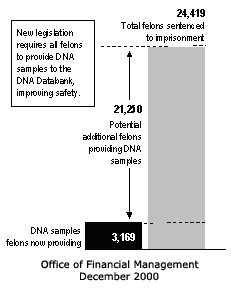
DNA Databases Need to be Expanded
While the use of Forensic DNA analysis has greatly helped in the Criminal Justice System, DNA analysis needs to be broadened in its uses and applications. The while it helps catch criminals, it often takes weeks if not months to get test results back from labs. In some “states DNA labs are so backlogged that it often takes ten months to get results,” and this can bring a investigation to a standstill and leave “ suspects [to] await trial” (Scheck 69).
Suspects can be found guilty for the simple fact that “DNA laboratories in the United States are so woefully underfunded, [and] they cannot type enough cases” (Scheck 69). A suspect can be found guilty, when in reality a DNA test might have proven that another criminal was at play. Forensic DNA laboratories need better funding so they can get data results back to investigators faster and in time for trials.
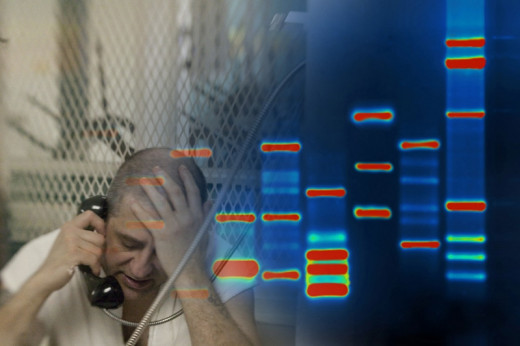
DNA, Judges, and Court Bias
DNA in trials also takes a toll. DNA from profiles needs to be used, and DNA testing cannot be a one-way street, held out by the prosecutors as conclusive evidence only when they like the results it yields. If DNA points to a client as being guilty, it has to be shown, not thrown away because the defendant was sure that the evidence was not that of the suspect.
DNA plays a large part in convicting criminals, but despite the crucial nature of evidence, judges have repeatedly shown themselves willing to toss potential proof if it has been acquired improperly. If evidence was taken from a scene that was contaminated, the evidence could be cast aside for that reason alone. This is why police are so concerned with keeping everyone away from a scene until evidence can be collected from the scene.
If DNA was collected from a scene without an accurate warrant or administrative permission, it can be thrown away on grounds that it was unlawfully collected. Because DNA evidence is a large part of the criminal system today, it is important for judges to receive at least fundamental training in forensic DNA analysis, because DNA is used so extensively in trials where the defendant is accused of assault , burglary, rape, or homicide. If judges have a better insight about what goes on at forensic labs and how evidence is used to determine results, then they would not be so fast to disregard forensic information in their verdict.
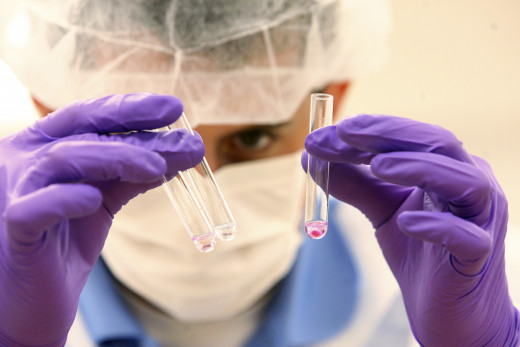
What part of the Helix is Used?
Databases are a large part of the criminal system, but they hold the possibility for so much more. While there are people who are concerned with a DNA databank that would hold millions of people’s genetic makeup, the databases that are used are encrypted and protected from abuse or unauthorized access.
While a person’s DNA holds a lot of information about their genetics, the DNA used in law enforcement only includes the identification piece. This piece is like a barcode with just enough information to make a positive match between two different DNA samples.
People do not have to fear that their personal information will get out, because the Federal DNA Identification Act of 1994 limits the databases to convicted criminals, at this time, access is restricted to law enforcement organizations, and a court order is required to use the information in judicial proceedings. This insures that information will not be misused under the court of law.
Databases in the USA
The databases in the United States allows for faster data output. They allow investigators to find a perpetrator without having that perpetrator in custody. The CODIS databases help investigators to find matches between suspects. But at this time there is not a nationwide databank system that connects all state databases.
The DNA Identification Act formalized the authority of the FBI to establish a national database, but they are developing this database from their own arrests and making it available to every state. They are not combining the already made databases of the states. So if DNA is collected in Texas and then run through the state system, it may not show up as a match, even if the suspect’s DNA is on profile in Oklahoma.
A nationwide databases would make apprehending a suspect that much easier. Not everyone is for a nationwide database or a database at all. This issue comes up because many civil libertarians criticized the law on grounds that they collect evidence without any individual suspicion. They believe that it is against our rights to take DNA without consent. While this is true, the courts have agreed with law enforcement officials that the need for DNA generally trumps convicted offender’s privacy interests.
The databases that are made by justice department are made in the interests of the people. Databases are created to make the United States a better place, they are not intended to take away liberties or endanger the privacy of law abiding people.
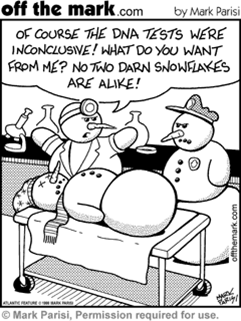
Underfunded Labs
DNA analysis had a major role in identifying the victims of 9/11. Forensic scientists, along with criminal justice officials, put together a database whose sole purpose was to identify the victims of 9/11. This was the first time that a database was used to identify victims in a disaster that had over “three hundred casualties” (Owen, Police Lab 102).
Databases like these are a great help to officials working at the scene of a disaster. While DNA analysis plays a large part in identifying those who were killed at disaster, DNA analysis is not always available. For a database to be created that can help in these disasters, the public has to be aware of how the database works. In order for a match to be found, there must be DNA to match the DNA found at the scene. This is where family needs to come in. The family of a victim can supply DNA to compare to that of the casualties at a scene.
Before any of this can happen, there has to be funds to go to the workers and to set up a database to use. These databases are so hard to set up because DNA labs are so underfunded that extended projects are nearly impossible to accomplish. Due to this, only major disasters get the attention and funding needed to identify the casualties in disasters. Forensic DNA labs needed better founding so they can extend to the identification of loved ones lost to disasters.
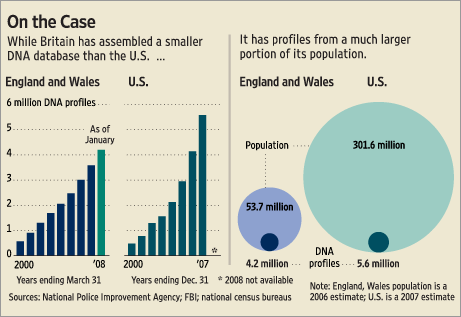
DNA All the Way
Forensic DNA Analysis is an important part to the Criminal Justice System. The use of DNA in court helps convict criminals and show the innocence of others. Through the use of DNA databases investigators are able to make connections in cases were traditional methods would have failed. In disasters were hundreds are dead, DNA can help identify those who died and bring closer to family members.
In the future I hope that the use and understanding of Forensic DNA Analysis will be broadened in a way that we can live in a safer country. DNA evidence presented in court is not always understood. While those who work in court do not need a degree in forensic, it would greatly help the system if those on duty had a relative, if not in dept, understanding of the process that DNA evidence goes through before its presented and what the DNA can mean. Databases make the job of the investigators so much easier. If databases received more funding the results would be huge.
Once all the state databases are hooked into one “national database”, many cases will take less time to solve (Fisher 155). Investigators will not have to get special permission, with evidence to back it up, to run a suspect through the databases of other states. I believe that databases would prosper if they were to include DNA profiles of anyone arrested for any crime. Criminals aren’t born their made, and once they start, they tend to go into a downward spiral.
As Jean Racine once said, “small crimes always precede great ones. Never have we seen timid innocence pass suddenly to extreme licentiousness.” The earlier criminals are stopped, the more protected society can be. Funding for databases is greatly needed for disaster databases. People are needed to work at disaster sites and collect DNA, so that people can be identified. These databases are needed so comparisons can be made. If Forensic DNA Analysis is broadened in its applications, then the United States can become a safer place.
DNA is not the magic bullet. It is not going to fix the Criminal Justice System, but what it does do is open this window on what is wrong with the system. It allows us to show with absolute certainty that these people are truly innocent.
— Brian InnesWorks
Fisher, David. Hard Evidence. New York: Simon & Schuster, 1995. Print.
Inman, Keith. Forensic DNA Analysis. El Cerrito, California: CRC Press, 1997. Print.
Innes, Brian. Bodies of Evidence. London: Reader’s Digest, 2000. Print.
Innes, Brian. DNA and Body Evidence. Armonk, New York: Sharpe Focus Inc, 2007. Print.
Kafka, Tina. DNA on Trial. New York: Thomas & Gale, 2005. Print.
Kobilinsky, Lawrence, Louis Levine, and Henrietta Margolis. Forensic DNA Analysis. New York: Chelsea House, 2007. Print.
Kobilinsky, Lawrence, Thomas F. Liotti, and Iamel Oeser. DNA: Forensic and Legal Application. Hoboken, New Jersey: John Wiley and Sons, 2005. Print.
Lyle, D.P. Forensics for Dummies. Hoboken, New Jersey: Wiley Publishing, 2004. Print.
Marzilli, Alan. DNA Evidence. Philadelphia: Chelsea House Publisher, 2005. Print.
Owen, David. Hidden Evidence. Ontario: A Firefly Book, 2003. Print.
Owen, David. Police Lab. Toronto: Quintet Publishing, 2002.Print.
Scheck, Barry C. “Getting Smart About DNA.” Newsweek 132.20 (16 November 1998): 69. Print.
Yeatts, Tabatha. Forensics: Solving the Crime. Minneapolis: Oliver Press, 2001. Print.
More Articles About DNA Databases
- FBI Combined DNA Index System (CODIS)
The CODIS Unit manages the Combined DNA Index System (CODIS) and the National DNA Index System (NDIS) and is responsible for developing, providing, and supporting the CODIS Program to federal, state, and local crime laboratories in the United States - F.B.I. and States Vastly Expand DNA Databases - NYTimes.com
The expansion of DNA collection to include millions of people who have been arrested or detained but not convicted is raising privacy concerns. - Fight Crime with a Universal DNA Database?
Earlier this week, the New York Times ran a provocative op/ed by Yale law student Michael Seringhaus in which he advocated that the DNA profiles of everyone be kept on file.

